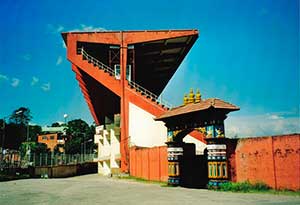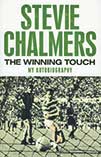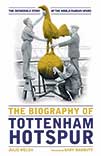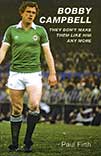 Dasarath Stadium in Kathmandu is Nepal’s biggest, with a capacity of 25,000. In 1988, 93 people died there when supporters attempted to flee a hailstorm and a crush developed in the tunnel exit because the stadium doors were locked. The ground was renovated in 1998 for the following year’s South Asian Games and again for the 2012 AFC Challenge Cup. It hosts the Nepal national team as well as various domestic clubs.
Dasarath Stadium in Kathmandu is Nepal’s biggest, with a capacity of 25,000. In 1988, 93 people died there when supporters attempted to flee a hailstorm and a crush developed in the tunnel exit because the stadium doors were locked. The ground was renovated in 1998 for the following year’s South Asian Games and again for the 2012 AFC Challenge Cup. It hosts the Nepal national team as well as various domestic clubs.
{youtube}sqcRpYUsVv4{/youtube}
 My autobiography
My autobiography
by Stevie Chalmers with Graham McColl
Headline, £19.99
Reviewed by Mark Poole
From WSC 314 April 2013
Stevie Chalmers scored the winning goal in the 1967 European Cup final. It’s still the most important goal in Celtic’s history: the goal that liberated club football’s greatest prize from its Spanish-Italian-Portuguese stranglehold for the first time and that inspired Bill Shankly to call Jock Stein immortal.
Chalmers scored 230 other goals for Celtic – including the last hat-trick in an Old Firm derby – but his career has come to be defined solely by his tap-in (team-mate Bertie Auld’s words) against Inter in Lisbon. His autobiography does nothing to change that. The middle two chapters, one for each half of that final, are where the book comes alive and Chalmers’s detailed perspective of the match is compelling reading for Celtic fans.
There are other intriguing aspects to his life and career: he almost died from tuberculous meningitis when he was 20, he only played five times for Scotland (in spite of his clear talent and scoring against Brazil) and he had a long career at the club he supported but an uneasy relationship with its most successful manager.
His perspective on Stein is interesting but no more so than many others and, perhaps unsurprisingly for a renowned gentleman, Chalmers seems reluctant to complain directly about being overlooked or played out of position.
A lot remains unsaid, leaving readers to infer much of the story. Like many of his contemporaries, Chalmers repeatedly insists that he would always rather do what was best for the team than for himself. However, it’s clear that some managers’ and selectors’ tactics and decisions (including Stein’s) still rankle with him over 40 years later, particularly his omission from the Scotland team that beat England at Wembley in 1967.
It’s a melancholy experience to intrude upon such a successful player’s feelings of loss. Stein was a notoriously hard man to read – his players’ feelings were rarely allowed to intrude on the business of winning matches – but his choices as a manager made it clear how much he valued Chalmers. The reader is left to wonder if Chalmers realises this and also if he would seem more content now if he’d made more of a fuss back then. This glimpse into a 1960s footballer’s mind is one of the more interesting aspects of the book.
The Winning Touch could have provided more of an insight into what it was like to experience Chalmers’s terrible illness, and to recover so remarkably from it. This presence of detail but absence of insight is symptomatic of other parts of the book, perhaps evidence of the adage that consummate professionals often produce mostly pedestrian autobiographies and typical of the emotional restraint of mid-century Scotsmen.
In his playing days Chalmers made the most of the chances that came his way, so it’s surprising that parts of his autobiography seem like a missed opportunity. Although it is worth reading, at least for the insight into the day when he and ten other men from the edge of the football world shocked the game’s aristocracy.
 by Julie Welch
by Julie Welch
Vision Sports, £20
Reviewed by Alan Fisher
From WSC 314 April 2013
The Twitter hashtag #againstmodernfootball is hardly a scientific dissection of the faults of the modern game but it has become an outpouring of genuine frustration and growing disenchantment: exorbitant ticket prices, alienated and marginalised fans, an obsession with the here and now and instant success. Julie Welch’s Biography Of Tottenham Hotspur is not only a revealing insight into the club, it could well restore your faith in football.
Welch traces the development of the club’s character and personality, showing there is more to a football club’s history than a list of players, matches and trophies. Her beloved Danny Blanchflower’s statement that it’s not just about winning, it’s about glory and doing things in style, articulates a culture and identity that dates back to the club’s formation in the 1880s, when three schoolboys met under a lamp-post 100 yards from the current ground.
Harry Redknapp and André Villas-Boas come from different schools of management but both talked of the need to play good football the Spurs way. Arthur Rowe’s pioneering “push and run” won a League title in 1951. He was influenced by another innovator, Peter McWilliam, Spurs boss in the 1920s, and in turn inspired the incomparable Bill Nicholson to bring unparalleled success in the 1960s and early 1970s. The familiar mixture of flamboyance and exasperation, the sublime and erratic, would be instantly recognisable to successive generations of Spurs fans.
We deny history at our peril. Alan Sugar saved the club but he understood the balance sheet better than his heritage, hence the crushing mediocrity of the 1990s with Christian Gross, Gerry Francis and George Graham. Then again, there’s nothing new under the sun. Financial crises, businessmen wanting to profit by moving the ground, an ability to snatch defeat from the jaws of victory: any decade at Spurs, not just the last one.
Welch is an author and screenwriter, the first woman football reporter in Fleet Street to have her own byline. She is a beguiling storyteller who tells the tale with a curiosity and style that sweeps the reader along. The air of artistry and magic seduced her as a schoolgirl but it’s not quite right to suggest they entice fans these days. Peer pressure, family ties or blind accident are more common factors. However once committed it keeps us there, becoming part of who we are.
The nature of Spurs’ identity as a Jewish club is the only omission, perhaps because although it’s an independent publication, unusually the club have co-operated and are shy of potential controversy. The absence of statistics and tables may dismay lovers of detail, who will point to several proof-reading errors.
It’s a beautiful book, wonderfully written, that is essential for Spurs fans and deserves to be widely read because it is about perspective, culture and identity, precious to fans everywhere yet under attack. Read it and I defy you to tell me that finishing fourth in the Premier League is what truly matters.
 They don’t make them like him any more
They don’t make them like him any more
by Paul Firth
Bantamspast, £12
Reviewed by Jason McKeown
From WSC 314 April 2013
It’s long been a mystery to me how people of a certain age will lament the behaviour of modern day footballers and then, within the same breath, romanticise the bad lads of decades earlier. The story of Bobby Campbell, Bradford City’s all-time leading scorer in two spells between 1979 and 1986, features tales of drinking sessions, fighting and police run-ins that would prompt moralistic howls of derision were he playing today. Yet the book’s tagline – “They don’t make them like him any more” – invites us to consider that football is worse off today for the absence of someone whose off-field antics have become as much a part of Valley Parade folklore as his 131 Bantams goals.
Still there is an almost apologetic tone to some of the stories of punch-ups with bouncers and drinking in the dressing room before matches, with biographer Paul Firth focusing more on Campbell’s many admirable qualities. Any footballer who recovers from a broken leg at 19, plays for nine different clubs across three continents and makes the Northern Ireland 1982 World Cup squad after a season in Division Four has quite a story to tell.
The book is a combination of Firth’s narration and the views of Campbell himself, which are interwoven throughout. At times the switching back and forth into the subject’s direct quotes feels awkward but the striker’s blunt statements add a valuable layer of understanding into how his career unfolded. Campbell is brutally honest about the sectarian troubles he experienced growing up in Belfast (“I had a few friends who were assassinated, one just for courting a Catholic girl”) and why his career, which started promisingly at Aston Villa, at one stage drifted into the relative obscurity of playing part-time in Australia.
Campbell’s two spells at Bradford City, his heyday, take in two promotions, the club almost going bankrupt (he had to be sold to Derby to raise money) and the tragic Valley Parade fire of 1985. You get a sense that, although Campbell had something of a hardman reputation, he deeply cared about team-mates, supporters and the club. The book’s most memorable moments are provided by interviewees who played alongside Campbell. They praise both his playing ability and caring nature, such as when he raced off a team bus that had crashed into a car to try to save the lives of two children: “It’s typical of the person, going in and not being afraid of anything,” former team-mate Stuart McCall says.
Following the Bradford fire, a City supporter tells of Campbell’s regular hospital visits to various supporters’ bedsides, as he and many others recovered. Despite a decent final spell at Wigan, Campbell was apparently fed up with football when he retired at the age of 32. Nonetheless, his biographer does an excellent job conveying the lasting legacy of this unlikely hero.